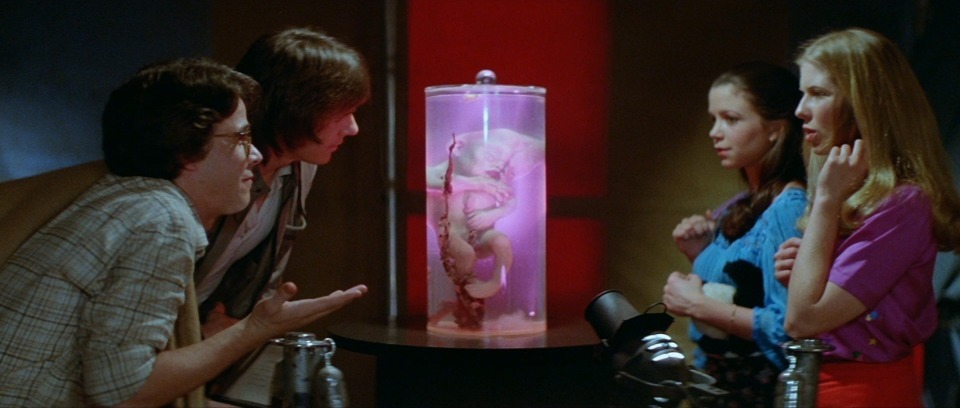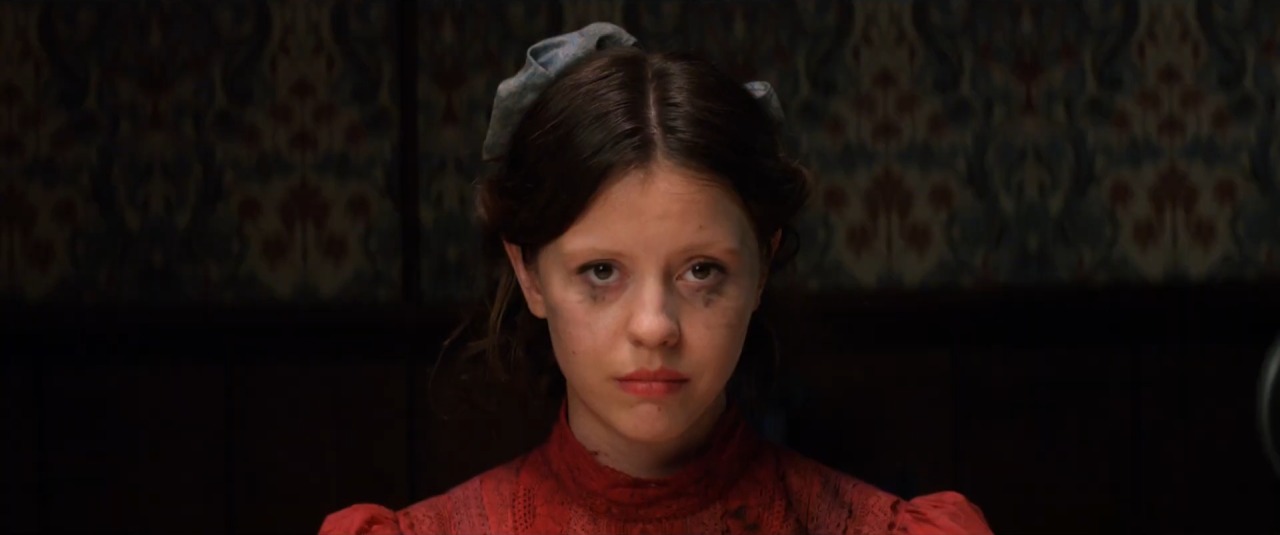Inferno (Argento, 1980)

I last watched this around eight years ago, and at the time found it to be one of my least favourite Argentos. I must have been in a bad mood at the time, because revisiting it now, itís gone up significantly in my esteem. So naturally I went back to my old review and tried to unpack, at least for my own benefit, what my issues were at the time and why it worked better for me this time around. I think the most obvious one is a change in perspective. At the time Iíd only seen a handful of Argentoís work, and when you compare something something that might not be the absolute best thing a director has done to a bunch of movies that are considered some of the best horror movies ever made, itís expected that the comparison might not be entirely flattering to the former. But when youíve seen a bunch more movies from the man, including something like The Card Player with its interminable scenes of characters staring at screens while sluggish video poker animations play out in real time, a movie where more interesting things happen onscreen goes down a whole lot better.
I do think I had a point with my narrative criticisms. Probably the most jarring thing about Inferno is that it essentially resets a few times. We first follow Irene Miracle as she searches for some sort of key hinted at by the cryptic book she reads. Then we follow Eleonora Giorgi, who finds herself tangled in the same mystery. Without spoiling the movie too much, things donít end terribly well for either of them. Then we switch to Leigh McCloskey, who plays Miracleís brother and tries to find out what happened to her. You can compare this to Suspiria, to which this is a sequel of sorts, and note the differences in approach. Neither movie is terribly concerned with tying out the details of plot and character, but in the earlier movie, we mostly stick with our heroine played by Jessica Harper for most of the movie, so that we navigate through the proceedings along with her. In both movies, the protagonists are essentially audience surrogates, but in Suspiria, you can see Harper inject a degree of her personality into the movie. She arguably doesnít need to do a lot of serious acting, given the forceful presence of the directorís hand in moving us along the story, but the mixture of inquisitiveness and trepidation she brings to the role make her character feel recognizably human and sympathetic. She is very much someone I found myself rooting for to make it through the movie.
Here, the performance of McCloskey especially can be described as Bressonian, his expressions pared down to the barest minimum so that he becomes purely a means of navigating the story. Arguably this makes him a more efficient audience surrogate, in that he doesnít have a whole lot of personality of his own and we can project ourselves more directly onto him. In that sense the movie has a certain video game quality to its storytelling, with McCloskey, Giorgi and Miracle as player characters fully taking on the personality of the player/viewer. The resetting quality of the narrative and the shifts between the protagonists line up with this as well. Lose a life. Repeat the level. The expendability of the protagonists manifests in another, more physical kind of tension. These movies are essentially about seeing graphic violence happen towards characters we identify with or are supposed to care about. I think of a few shots of Irene Miracleís exposed neck and Daria Nicolodiís bare feet, where the characters feel almost poignantly vulnerable. (I think Nicolodi is probably the warmest character in the movie, in that her presence manages to come through despite the movie downplaying human emotions as aggressively as it does.) Flesh is fallible, the blade is not.
As for my other criticism of the filmís technical aspects, Iím trying to figure out what the hell I might have been on at the time because on a rewatch, I think this very obviously looks great. Very few directors know how to frame, light and cut an image like Argento, and at least one of the few who operate on that level, Mario Bava, worked as an assistant director on this movie (doing second unit work while Argento was sick with hepatitis), so you know youíre in good hands. The building in which the bulk of this is set is stylized so aggressively that it canít help but feel inviting despite being undeniably sinister. Wouldnít you like to spend a little time walking around in this movie? That being said, Iíll go easy on myself and note that no, this doesnít look exactly like Suspiria. The change in aspect ratios means that this doesnít feel as grandiose as the 2:35 images of the earlier movie. And the lighting scheme here feels even more artificial and insular. Whatever traces of natural light can be glimpsed in the other movie have been almost completely eliminated here. Characters speak multiple times of a strange odour, and I imagine if I stepped into this movie, it would feel like I was hit with a wall of perfume applied too liberally, suffocating in its strength. Suspiria breathes and moves in a certain way. Inferno kind of sits there and lingers. Thereís also the Keith Emerson score, which I found myself warming up to this time around. It compares unfavourably to the Goblin and Morricone scores that other Argentos have benefited from, but as a relatively traditional score, I think itís reasonably effective (even if it switches to Verdi during one of the movieís more boisterous highlights). And the fact is, I listen to ďMater TenebrarumĒ with some frequency.
And of course, this is an Argento movie, meaning that we have a number of great murder scenes, where flesh and blood are just more colours in the movieís stylized palette. It also means there are a number of endearingly goofy moments, most notably a scene where Nicolodi has a bunch of cats thrown onto her (which Argento still directs the shit out of, bless his heart) and another where an old man tries to drown a bunch of cats, falls into a bunch of rats, cries for help, only for his supposed saviour to stab the bejesus out of him. (Again, Argento does his darnedest to direct this with style and force some tension into the happenings.) If the movie truly challenges oneís suspension of disbelief, itís in an early scene where Ania Pieroni pets a cat while glaring at McCloskey during a lecture. One, itís very unlikely that Pieroni would have been able to bring a cat into class. Two, if she did, itís unlikely that the other students would have maintained decorum and wouldnít instead have lined up to also pet the cat. But then you remember that this is a supernatural horror, and that Pieroniís magic powers might circumvent the realities of such a situation. What do I know. Pieroniís eyes are supernaturally striking. The cat is supernaturally fluffy.
My experience with it, about 15 years ago, was that it was a collection of pretty awesome scenes that only barely connected in any way I could appreciate culminating in an ending that was bafflingly nonsensical.
15 years ago that was a problem for me. I've changed a lot since then.

 But we're also talking about one of the greatest runs of any director in the history of horror. So why quibble.
But we're also talking about one of the greatest runs of any director in the history of horror. So why quibble.






